Campagnolo Chorus review
Campagnolo Chorus has traditionally offered the functionality of the Italian brand’s flagship Super Record and Record groupsets but at a more competitive price thanks to its use of less expensive materials – we ride the latest 12-speed rim-brake version
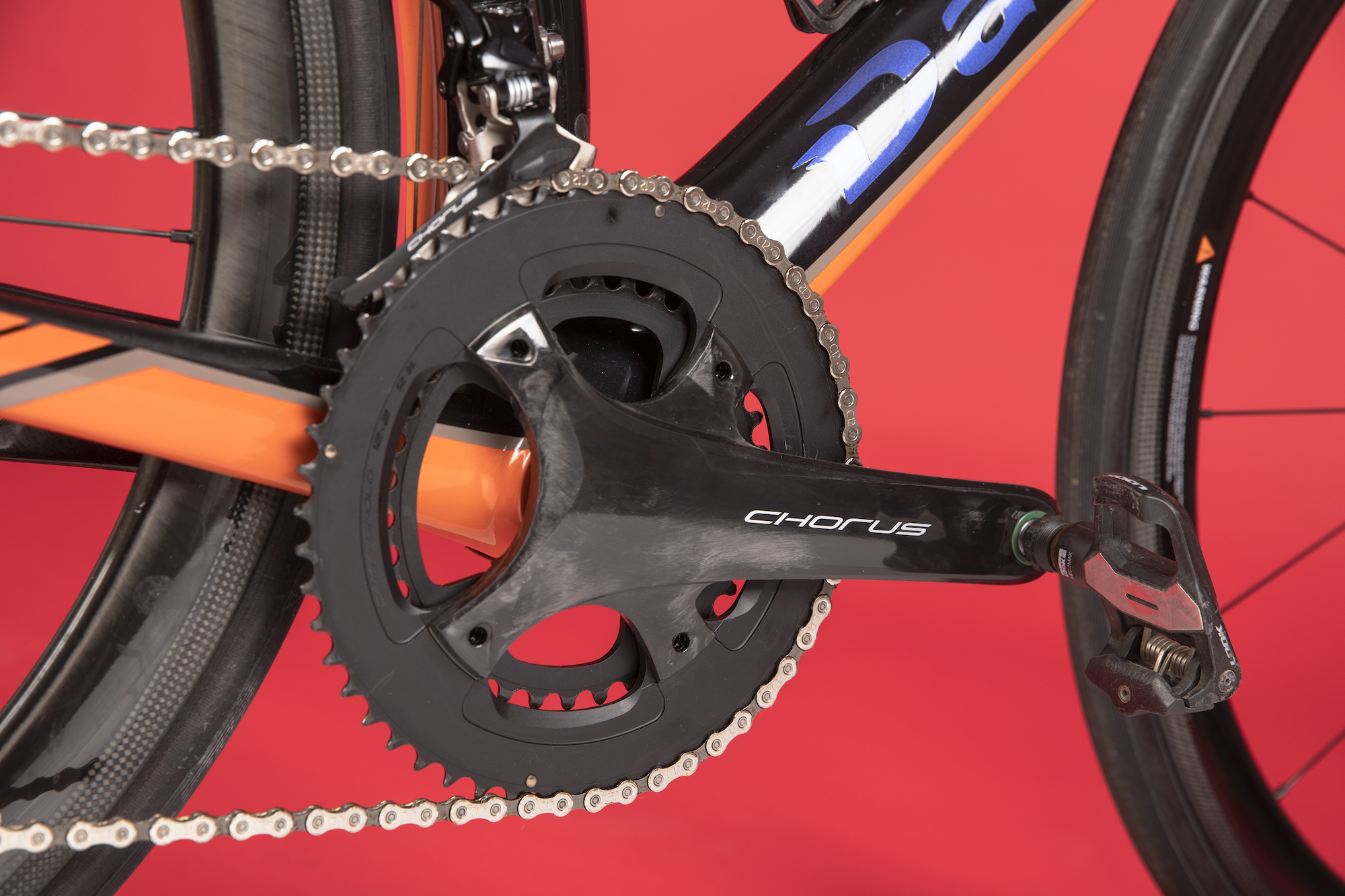
If you want the look and feel of premium Campagnolo, Chorus has it. It is priced far lower than Super Record and Record thanks to use of more cost effective materials, but these don’t impact its performance and weight in any significant way. Not only does its price make it more accessible, but its more sensible gearing options do too.
-
+
Tech from Super Record and Record
-
+
Same look and feel as top Campy groupsets
-
+
More versatile gearing options
-
+
Very fast shifting
-
+
Powerful rim braking
-
+
Competitive price
-
-
Shimano people might not like the clicky shifting
-
-
Limited tyre clearance
You can trust Cycling Weekly.

Campagnolo launched this latest 12-speed edition of Chorus in 2019, offering it in both disc and rim-brake mechanical versions. It claimed that “no compromises have been made in this extension of the characteristics and main advantages of Super Record and Record 12-speed groupsets.”
Aimed at keen amateurs rather than pros, 12-speed Chorus’s Ultra-Torque crankset now comes in 48/32, 50/34 and 52/36 cranksets with a 165 mm crank length also offered. According to Campagnolo, these smaller chainring sizes (there’s no 53/39) along with a choice of 11-29,11-32 or 11-34 cassette makes Chorus the ideal groupset for those wanting a multi-purpose cycling experience – with the 48/32 clearly aimed at the burgeoning gravel market.
I tested the rim-brake version fitted to a rather gorgeous Italian-made Daccordi Noah.
Campagnolo Chorus Ergopower shifters (362g)
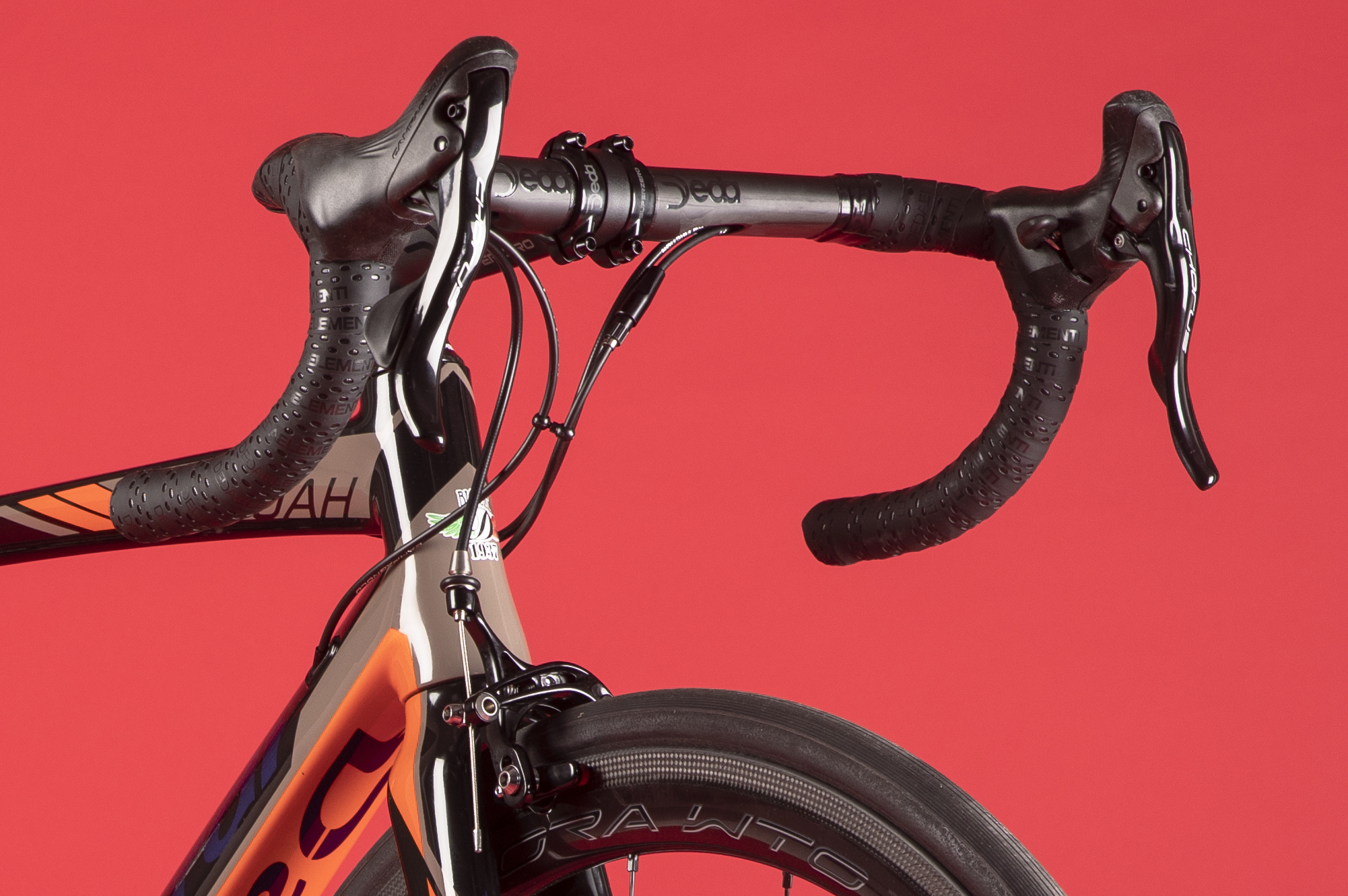
The mechanical rim-braking shifters are smaller than their disc-brake equivalents as they obviously don’t have to house a master cylinder, but there’s still a lot more space on the hoods than with earlier Campagnolo groupsets. The latest ergonomic shape works nicely and feels very comfortable, especially in an aero position. The hood finishes with a pronounced, slightly inward-facing hook that aligns with neutral wrists, making a flat-forearm position feel stable and efficient.
Not everyone will be a fan of the ribbed Vari-Cushion rubber, but there’s no doubting that it’s grippy even when sweaty.
The brake levers are made from aluminium rather than the carbon of Super Record and Record, but the weight difference is pretty inconsequential and the size and double curve shape are the same, which is more important.
The brake lever pivot has been moved upwards to improve braking power from the hoods, and it really works well. This, coupled with the extra length of the lever, has beefed up braking very impressively compared to older Campagnolo. With so much power at just a very light squeeze of the lever from either the drops or the hoods, you might well ask who needs disc brakes?
Incidentally, lever reach is adjustable – good news for those with smaller hands.
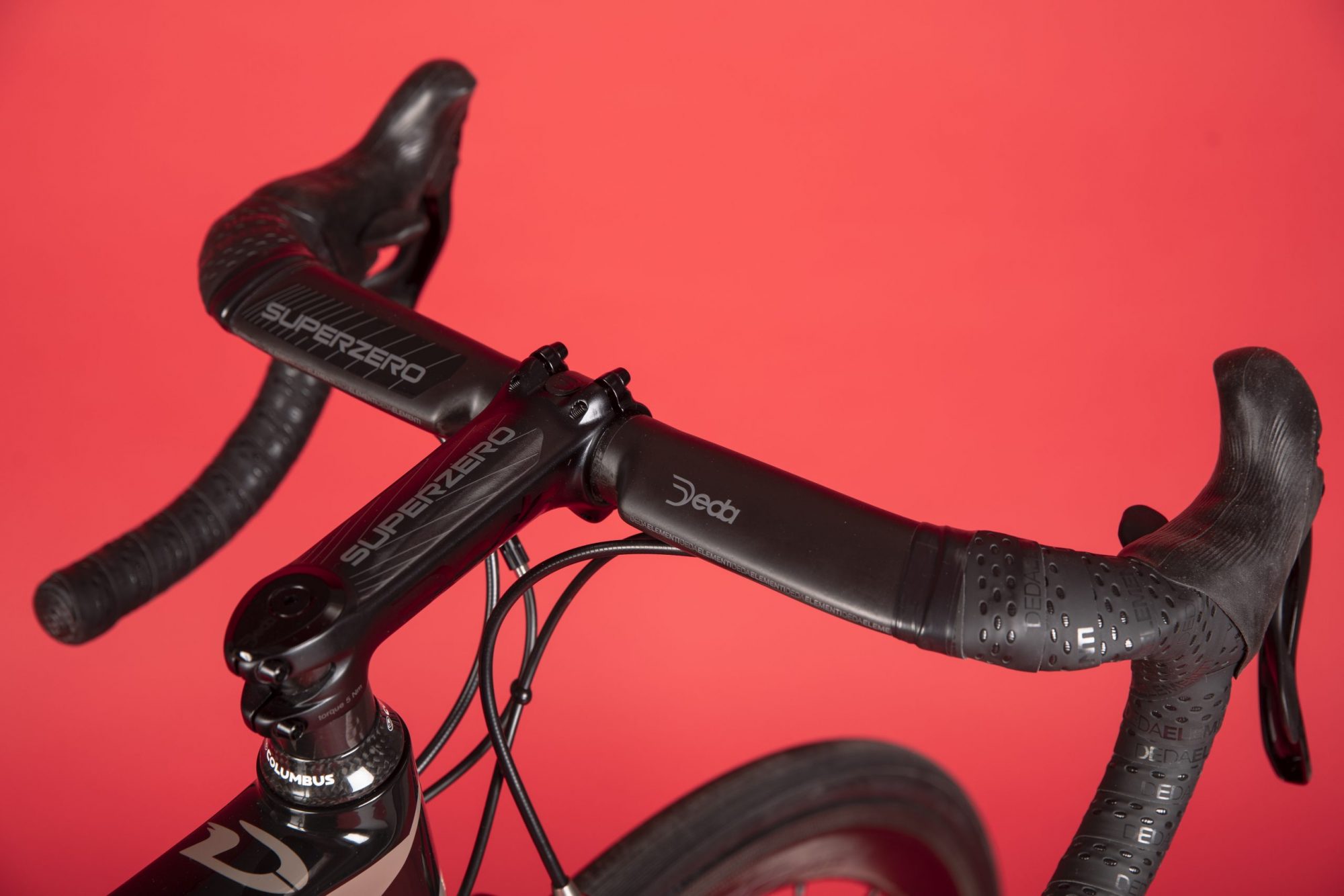
Campagnolo has of course continued with its trademark one-lever-one-shift combination of a button for upshifts and a paddle behind the brake lever for the downshifts. The thumb button has got a little bigger but, as before, your thumb needs to be exactly in the right place to access it satisfactorily from the drops. In addition, more force from the thumb is required to activate the gear change, and when the shift takes place it is accompanied by the loud click that has become Campagnolo’s trademark. Downshifts with the paddle are clicky too, as are front changes and even trims of the front mech.
Campagnolo appears to be using higher spring tension to eliminate dead travel in the shifters and also to make shifting faster, possibly more in line with electronic EPS. It does this successfully – gear shifts are very fast indeed – but it loses a little bit of feel and certainly a degree of smoothness. There’s no chance of quietly dropping it into the 11 ready for the town-sign sprint without your clubmates guessing what you’re up to.
Chorus can still shift up five gears at a time with a single stab of the thumb, which mechanical Shimano groupsets still can’t.
Campagnolo Chorus derailleurs (rear 220g, front 87g)
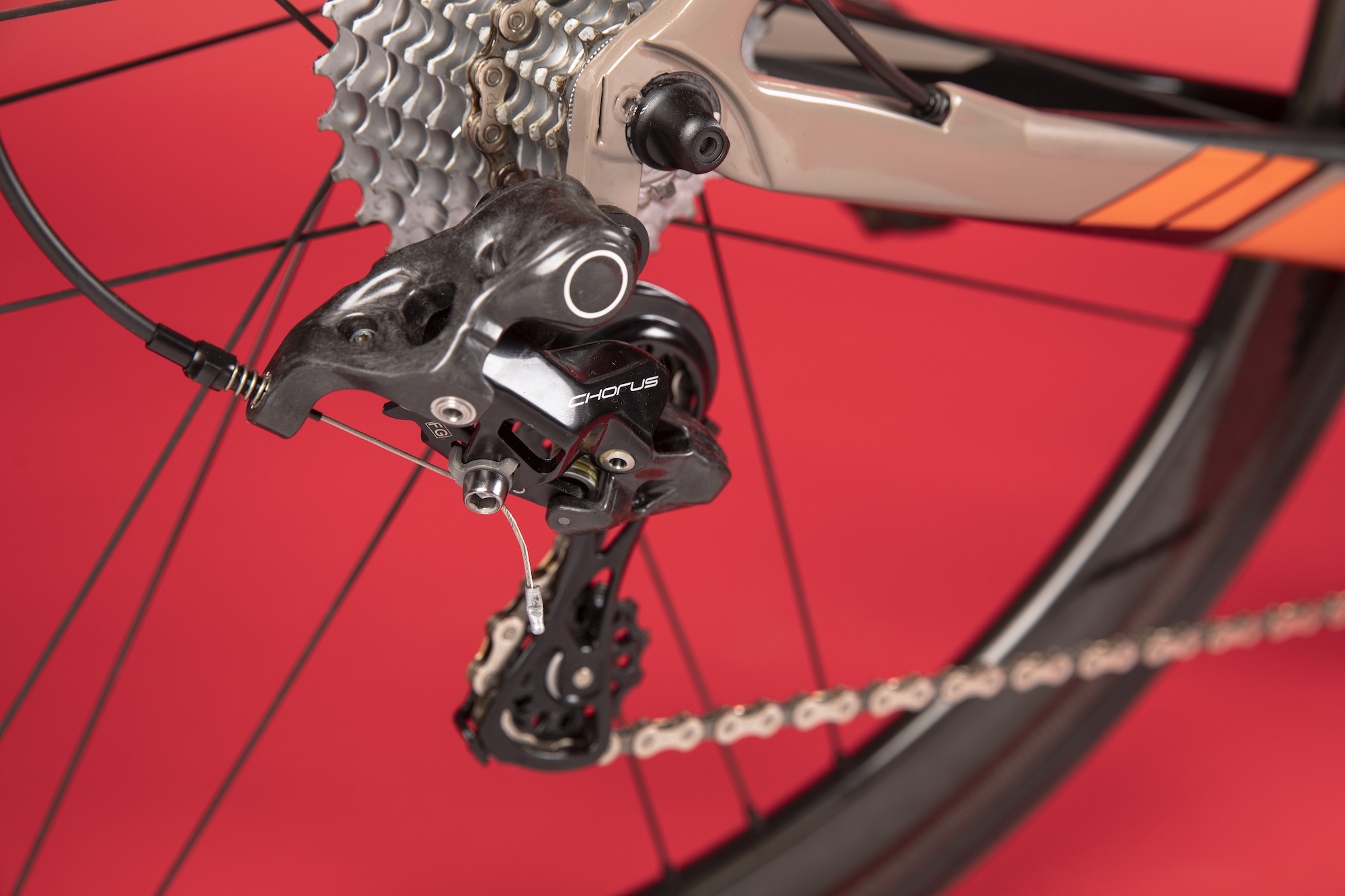
The Chorus rear derailleur, like the Ergopower shifters, swaps carbon for aluminium and technopolymer – the cage and the external plate. As with the shifters, this adds just a tiny amount of weight. Campagnolo says the rear mech’s 3D-Embrace technology enables it to engage more of the sprockets' teeth, improving both efficiency and wear rate. It also has an optimised return spring, which would account for the very fast shifts.
Shifting is very precise as well as very fast. Going into the 15 or the 14 could produce a metallic gunshot sound from the cassette whereas the larger sprockets were quieter. I’ve been told this would reduce after a bedding-in period, and to be fair I wasn’t able to spend enough miles on the groupset to find out.
The pulley wheels have 12 teeth each – one more than Shimano’s road groupsets, winning another round of one-upmanship – and transmission once in gear feels as frictionless as you’d expect.
The front derailleur also swaps carbon-fibre for metal but otherwise has the same design as Record and Super Record.
As with the rear derailleur, shifting is very fast and lever throw seems to have been reduced for the change from little to big ring. As with the rear mech, dead travel has been eliminated: basically, when the lever moves the mech moves. For me the free stroke-eliminating design works better up front. Shifting between chainrings must be positive and fast and there’s no messing about here. In keeping with the rest of the shifting, the trim function emits a loud clunk, but functionally it’s great.
Campagnolo Chorus cassette (310g)
Whatever you think of its shift feel, Campagnolo has got Chorus’s ratios spot on. All three steel cassettes feature the same one-tooth increments for the first seven sprockets from the 11 up – a time triallist’s dream ‘straight-through’ block but with bail-out gears for steep hills too.
There’s 11-29,11-32 or 11-34 to choose from. In all, the last two triplets are machined from a single piece of steel, while the rest of the sprockets are separate with machined aluminium spacers.
Super Record and Record don’t get a 11-34 option, underlining Chorus’s designation as a groupset for everyday riders.
Campagnolo Chorus chainset (728g)
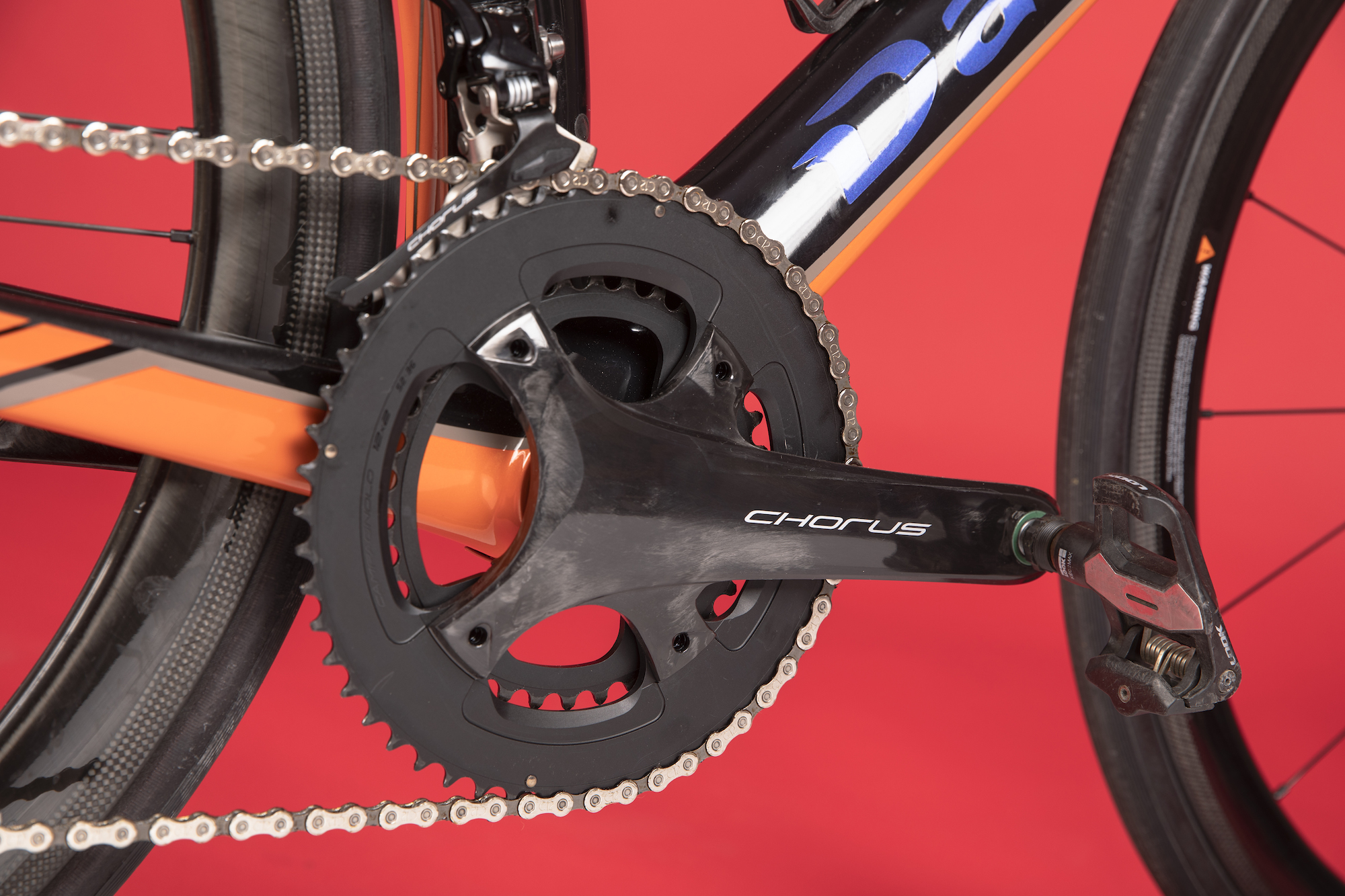
The chainset is the focal point of a groupset, and Campagnolo knows how to use this to its advantage. The nude carbon marbled finish is incredibly striking – and it’s not technically a finish, according to Campagnolo, it’s the result of a layup process of unidirectional carbon-fibre that is intended to protect its integrity against UV. The carbon weave with deep lacquer that Campagnolo previously made its calling card has gone.
Campagnolo has always gone its own way with its bolt circle diameters, and this time Chorus even gets a different BCD from the latest Super Record and Record. It uses 123mm (compared to the 145mm of the latter two) in order to facilitate the 48/32 option and Chorus’s little ring bolts to the big ring rather than to the spider. So chainrings are specific to Chorus and not interchangeable between groupsets.
The look is not quite as slick as the top two Campy chainsets, whose bolts are hidden, but there’s still plenty of indisputable wow factor here.
Turning on Campagnolo’s steel Ultra Torque axle, the chainset was never going to lack stiffness and I certainly didn’t feel any flex. It was more than a match for the Daccordi test bike’s monster down tube.
Chorus uses the tried-and-tested Ultra-Torque system, whereby bearings (steel for Chorus rather than the ceramic of the top two groupsets) are pressed onto the semi-axles rather than being part of the cups.
Campagnolo Chorus chain (243g)
Chorus’s 12-speed chain at 243g for 110 links weighs 20 grams or so more than Super Record’s. The top chains have in recent years used hollow pins, hence the weight saving, but you could legitimately argue that a heavier chain is better for many reasons, especially when it’s by such a small amount.
As I mentioned, I didn’t spend enough time to be able to induce any significant wear, but evidence from previous Campagnolo chains suggest high expectations are due - these components have a reputation for longevity.
Campagnolo Chorus rim brake calipers (318g)
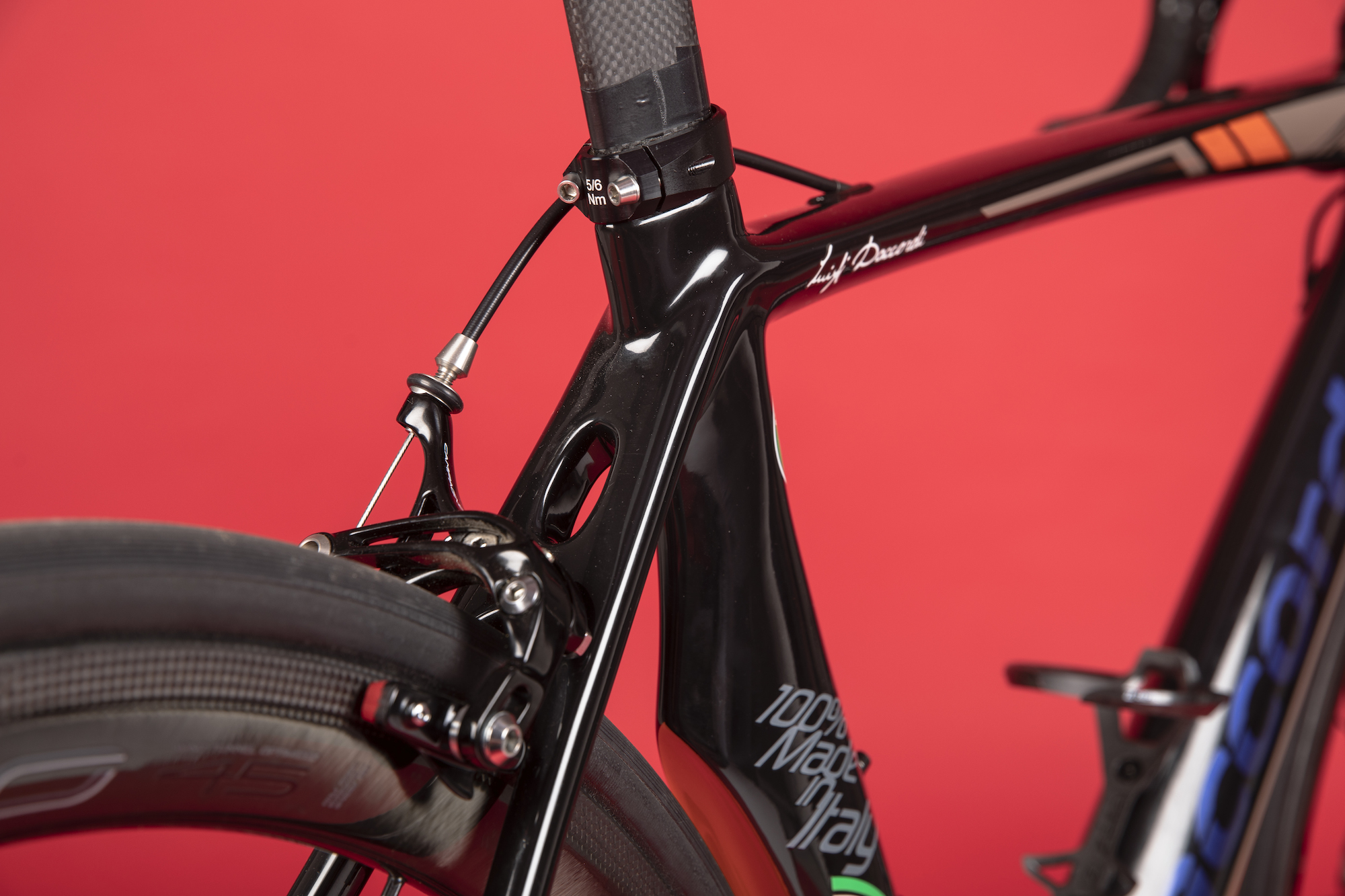
Possibly due to the competition from disc brakes, Campagnolo has dropped single-pivot rear brake options since moving to 12 speed, amping up its rim-braking power, which is a good move. While Super Record and Record’s rim calipers have been filled in to be more aerodynamic, the latest Chorus brakes still have the earlier skeleton design.
However, their performance is mighty. I rode them with Campagnolo’s awesome new Bora WTO wheels, as used by Alexander Kristoff to win the 2020 Tour de France stage one, and although I can’t claim to have been slowing down from the same velocity as the Norwegian, the Chorus calipers with Campagnolo’s red compound carbon brake pads offer as much stopping power as anyone needs. Paired with the longer levers of the latest Chorus shifters, modulation is also excellent – there’s loads of feel.
Of course one of the reasons why there’s a trend towards disc brakes is because of the bigger tyres riders are wanting to use or being told to use, depending on your point of view. Super Record and Record’s rim calipers are said to be compatible with 28c tyres but Campagnolo doesn’t claim this for Chorus. I ran 25c Vittoria Corsas on the wide Bora rims and there was plenty of clearance even though they measured over 25mm; 28s might be a little bit tight but still possible. This may not bother traditionalists, but it is worth bearing in mind if you expect to run wider rubber.
The ride
We don't have the space for a good old Campagnolo v Shimano debate here, but for me the latest Ultegra R8000 supplies more shifting finesse than Chorus. That said, for fans of modern Campagnolo, the very fast, positive shifting with its click accompaniment is what the Italian brand’s mechanical groupsets are all about. and Campagnolo's stated aim is to offer the characteristics of Super Record and Record, not Dura-Ace and Ultegra. Press the button or nudge the paddle and ‘bang!’ it changes gear instantaneously and super precisely. And in racing, that’s what you want. This 12-speed Chorus does that, and with its sensible ratios aimed at everyday riders rather than racers it’s a premium racing groupset that cyclists of all levels can enjoy. And perhaps best of all, the rim brakes are really fantastic.
I've tried to cover the individual performances of the components under their own sections above. When they're combined, it's definitely a case of the whole being greater than the sum of its parts. The super fast shifting, perfectly judged ratios and powerful fingertip braking all add up to an exciting ride that's packed full of personality.
Value
Super Record is stratospherically expensive, in keeping with tradition, costing over twice the price of Chorus in its mechanical rim brake edition – but weighing about 250g less. Meanwhile, rim-braking mechanical Record costs around £650 more at its suggested retail price, and weighs around 100g less.
With its judicious use of aluminium and steel rather than carbon-fibre and titanium Chorus is priced very competitively indeed. In the performance to price ratio it scores very highly even when it's not being compared to its more expensive stablemates.
Campagnolophiles look away now: Shimano Ultegra is slightly cheaper at its RRP of £1,099.99 at 2,266g undercuts it by a couple of grams too.
Finally - do remember that if you plan to move from another groupset provider to Campagnolo, and like to work on your bike yourself, you will need to buy accompanying tools. If you're already a Campy user you'll be prepared for this.

Thank you for reading 20 articles this month* Join now for unlimited access
Enjoy your first month for just £1 / $1 / €1
*Read 5 free articles per month without a subscription

Join now for unlimited access
Try first month for just £1 / $1 / €1
Get The Leadout Newsletter
The latest race content, interviews, features, reviews and expert buying guides, direct to your inbox!
Simon Smythe is a hugely experienced cycling tech writer, who has been writing for Cycling Weekly since 2003. Until recently he was our senior tech writer. In his cycling career Simon has mostly focused on time trialling with a national medal, a few open wins and his club's 30-mile record in his palmares. These days he spends most of his time testing road bikes, or on a tandem doing the school run with his younger son.
-
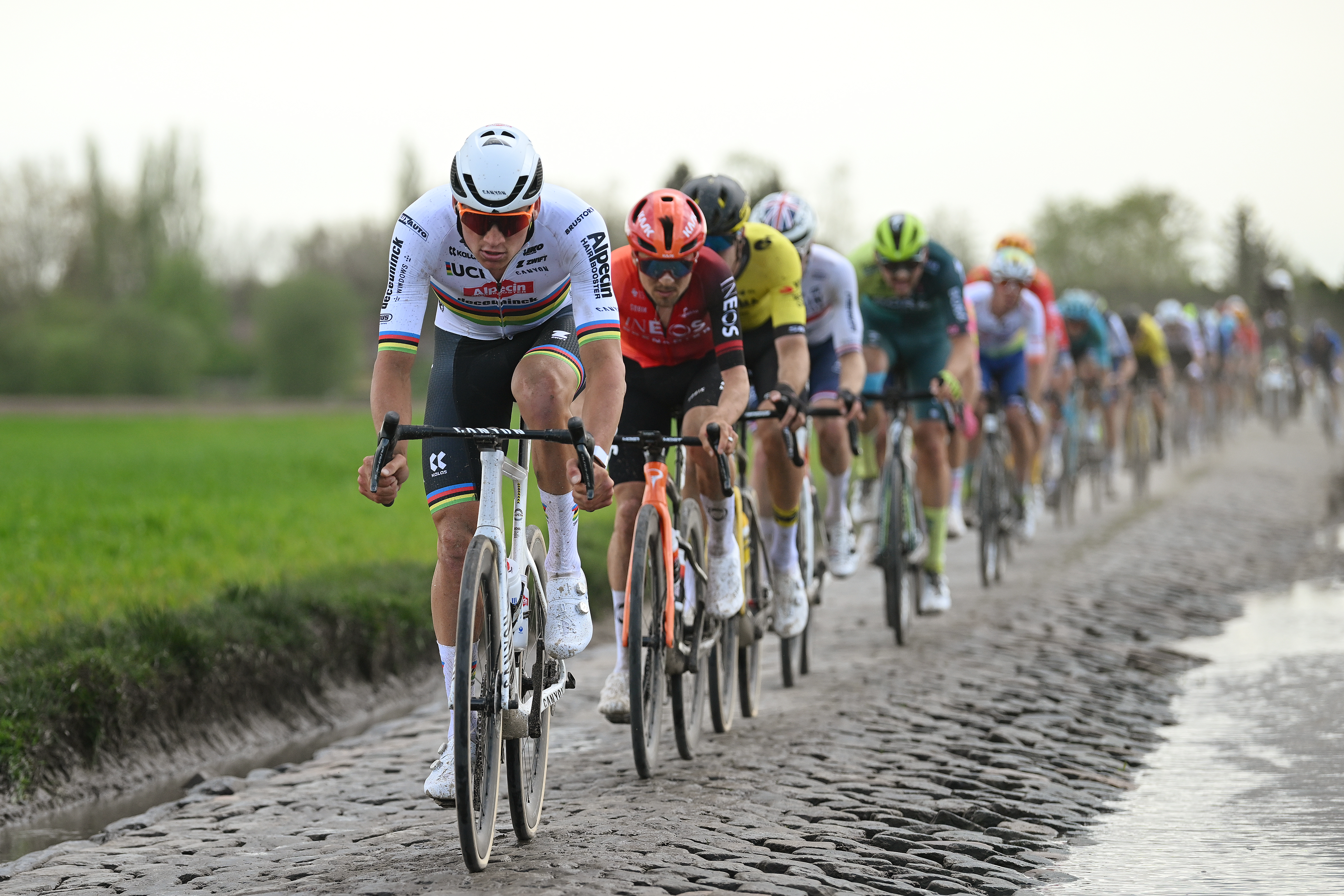 Tadej Pogačar's historic debut, Lotte Kopecky at the double and a new Arenberg diversion: Everything you need to know about Paris-Roubaix and Paris-Roubaix Femmes
Tadej Pogačar's historic debut, Lotte Kopecky at the double and a new Arenberg diversion: Everything you need to know about Paris-Roubaix and Paris-Roubaix FemmesThe Hell of the North happens this weekend - here's how to watch, who to watch, and what to watch out for
By Adam Becket Published
-
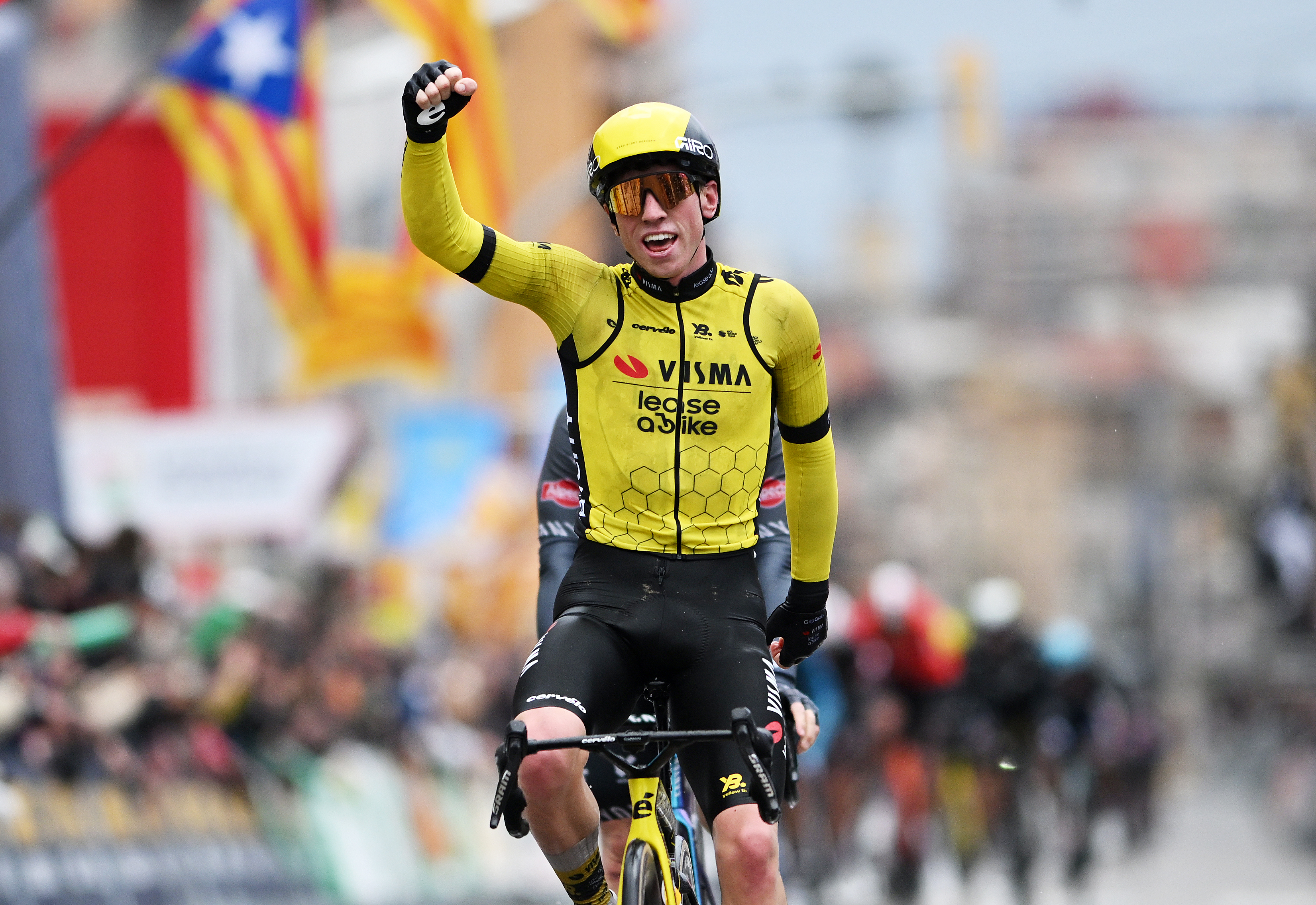 'I continue to amaze myself' - 19-year-old Matthew Brennan set for Paris-Roubaix debut
'I continue to amaze myself' - 19-year-old Matthew Brennan set for Paris-Roubaix debutBritish teenager called up to first Monument with Visma-Lease a Bike
By Tom Davidson Published
-
 I can't stand seatpacks - it's time to make pannier racks cool again
I can't stand seatpacks - it's time to make pannier racks cool againWho'd want a wagging tail when you can have sturdy pannier bags?
By Matt Ischt-Barnard Published
